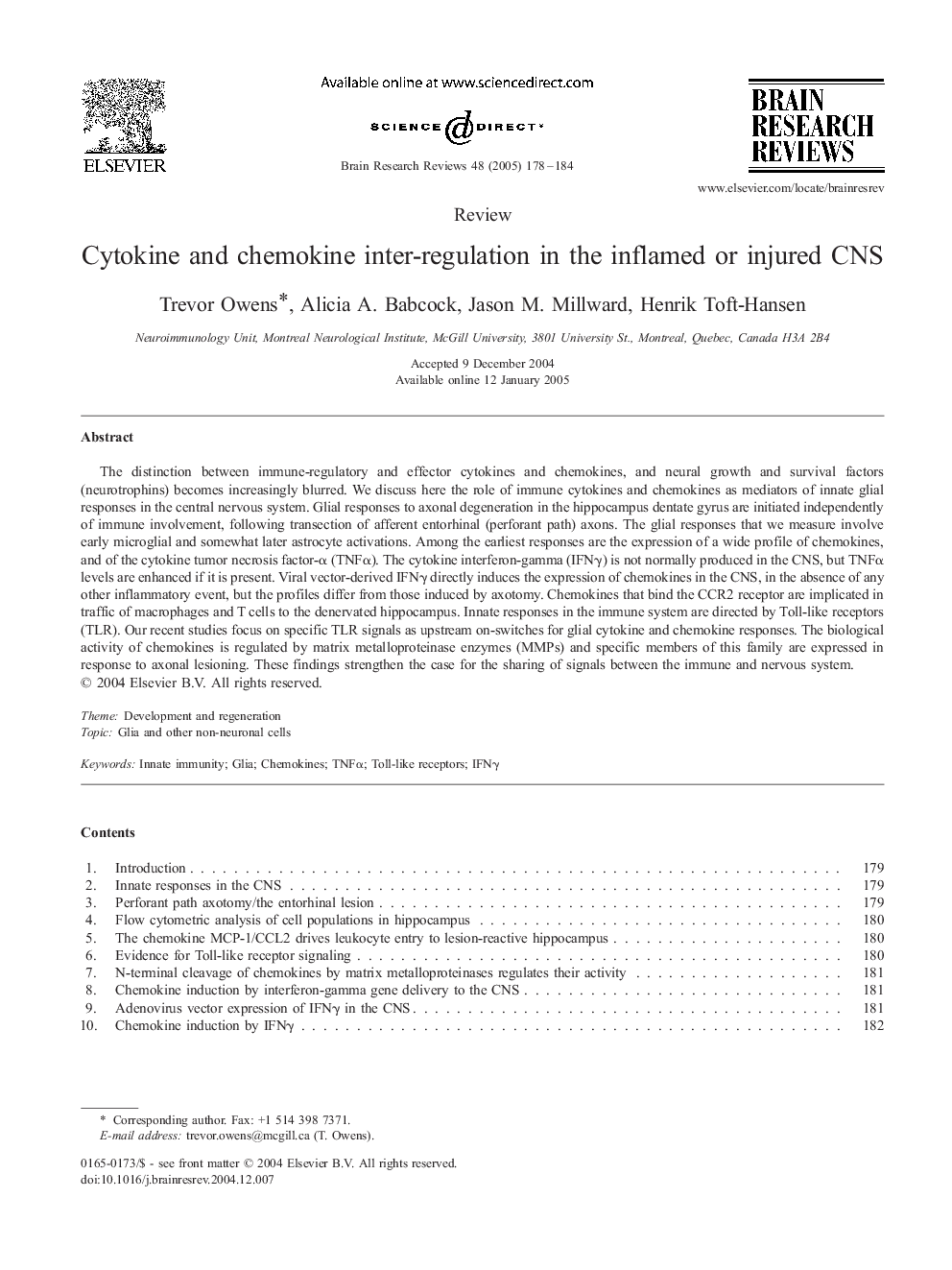| Article ID | Journal | Published Year | Pages | File Type |
|---|---|---|---|---|
| 9423153 | Brain Research Reviews | 2005 | 7 Pages |
Abstract
The distinction between immune-regulatory and effector cytokines and chemokines, and neural growth and survival factors (neurotrophins) becomes increasingly blurred. We discuss here the role of immune cytokines and chemokines as mediators of innate glial responses in the central nervous system. Glial responses to axonal degeneration in the hippocampus dentate gyrus are initiated independently of immune involvement, following transection of afferent entorhinal (perforant path) axons. The glial responses that we measure involve early microglial and somewhat later astrocyte activations. Among the earliest responses are the expression of a wide profile of chemokines, and of the cytokine tumor necrosis factor-α (TNFα). The cytokine interferon-gamma (IFNγ) is not normally produced in the CNS, but TNFα levels are enhanced if it is present. Viral vector-derived IFNγ directly induces the expression of chemokines in the CNS, in the absence of any other inflammatory event, but the profiles differ from those induced by axotomy. Chemokines that bind the CCR2 receptor are implicated in traffic of macrophages and T cells to the denervated hippocampus. Innate responses in the immune system are directed by Toll-like receptors (TLR). Our recent studies focus on specific TLR signals as upstream on-switches for glial cytokine and chemokine responses. The biological activity of chemokines is regulated by matrix metalloproteinase enzymes (MMPs) and specific members of this family are expressed in response to axonal lesioning. These findings strengthen the case for the sharing of signals between the immune and nervous system.
Keywords
Related Topics
Life Sciences
Neuroscience
Neuroscience (General)
Authors
Trevor Owens, Alicia A. Babcock, Jason M. Millward, Henrik Toft-Hansen,
